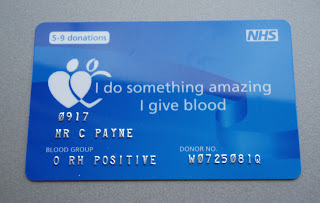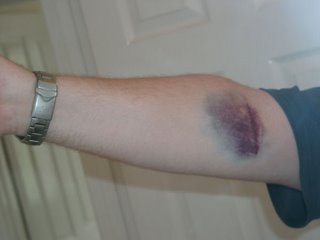I started by getting a tuktuk back to the tailors to get any required adjustments made to my suits and organise getting them shipped back home. The tuktuk driver charged me 60baht for 7 minutes driving and place me some distance away from the tailors before directing me the wrong way down the street and driving off.
Fortunately at this point my luck changed and I bumped into a man who turned out to be the manager of the tailors I was going to. We headed to the shop and he asked me about my time in Thailand before taking me up to his office and the fitting rooms. I was shocked to find the trousers and shirts already complete (with no need for adjustments). He explained that they had a factory outside of Bangkok employing about 10,000 people!!!!. Normally they did large orders that were sent to Italy where the labels are added. The label usually says something like Armani or Versace and at this point the price goes up by 500%. They don't normally sell to the public at the price I got (the price Armani pay) I had caught the last 90 minutes of an annual 1 week promotion.
After we had taken care of business he suggested I went for a cruise on the Chao Praya (The main river in Bangkok). I agreed and he left his shop to take me by taxi. I felt guilty that he even paid for the taxi until I remembered how much I just paid him for the suits.
The cruise was on a traditional longtail boat with the tiller, engine, shaft and propeller all connected in a long line on a single 2 axis bearing. This means the guy driving can just point the propeller any direction he wants as deep below the water as he wants and just twist the throttle. They work quite well. The boat went down lots of little side channels lined with quaint ramshackle houses on stilts. It was nice to get away from the bustle and fumes of the city and breathe fresher air for a while. All I had to do was sit in the boat and take pictures of whatever I wanted, fine by me.
After a while my driver stopped by a house. I looked up and saw a little old man with a long pole on the end of which was a yellow plastic bucket full of bread. He told me "20Baht to feed the fish". I looked down and the boat was surrounded by big fish. It looked like fun so I shoved 20Baht in the bucket and grabbed a loaf. I tore off a chunk and lowered it into the water. The fish went mental! I got drenched as they tore the bread out of my hands. However it was fun. and we got pictures. before carrying on.
The next stop was next to a little old lady bobbing up and down in the middle of the river in boat filled with souvenirs. I bought a small wooden Buddha, a small wooden frog that makes a noise that is not unlike croaking when you rub it's back with the stick it has kept in it's mouth and a bottle of beer each for me and my driver out of an ice box she kept next to her. It suddenly dawned on me that fish, bucket guy and souvenir boat lady were waiting for us and all the other longtail boats running tourists up and down the river and the drivers knew this. Nice arrangement.
After that I walked through the city and got lightly ripped off by a little old lady. Without asking me she grabbed my hand and filled it with bird seed repeatedly telling me it was "All OK". I then got mobbed by pidgeons wile she told me I owed her 300Baht. Damn!!!
Finally I managed to get back to the hotel before today's instalment of the monsoon showed up.
Tomorrow I hope to see the Golden Mount, The Jade Buddha and maybe the Koh San Road. In the evening I catch the overnight train to Surat Thani and then the ferry to Koh Samui. White sandy beaches, blue seas, palm trees and large drinks served in coconut shells here I come.



























